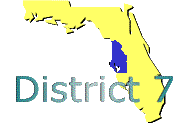

|
District 7: |
|
Send Your |

TMC Traffic Information Dissemination Equipment Package |
 |
Description: |
This Equipment package provides the capability to disseminate incident related information to travelers, potential travelers, and private information service providers. These capabilities shall be provided using a workstation type processor within a facility connected to traveler information providers by utilizing existing wireline links.
|
||||||||||||||||||||||||||||||||||||||||||||||||||
Included in: |
Citrus County Traffic Control Center Clearwater PWD Systems FDOT D7 Regional Transportation Management Center Hernando County Traffic Control Center Hillsborough County Traffic Control Center Pasco County Traffic Control Center Pinellas County Traffic Control Center Plant City Traffic Control Center St. Petersburg Traffic Control Center Tampa Traffic Control Center Turnpike Operations Center (Turkey Lake) |
||||||||||||||||||||||||||||||||||||||||||||||||||
Processes: |
|
||||||||||||||||||||||||||||||||||||||||||||||||||
User Service Requirements (fully or partially addressed): | |||||||||||||||||||||||||||||||||||||||||||||||||||
|
|||||||||||||||||||||||||||||||||||||||||||||||||||
| The detailed process and user service requirement traceability information on this page was extracted from the National ITS Architecture. Consult the National ITS Architecture web site for more information. | |||||||||||||||||||||||||||||||||||||||||||||||||||
